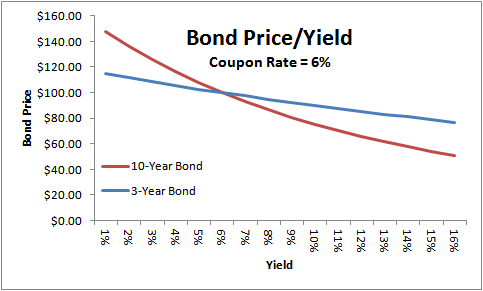TaxFree Bonds Paying Eight Percent
Post on: 23 Июль, 2015 No Comment

How you and your clients can cash in.
February 21, 2012
by Alan Haft
Given this ultra-low interest rate environment that according to the Federal Reserve is expected to last at least a few more years, I recently wrote a column outlining several areas where your clients can earn higher yields on their money.
The column generated a great deal of responses and many people specifically e-mailed me for more information on tax-free investing. While I can certainly discuss commonly held tax-free individual municipal bonds or funds, I wanted to turn your attention to a little known area of the market that might really help your client investors.
One of the more interesting new developments for generating investment income is tax-free closed-end exchange-traded bond funds (CEETBFs). These investments are similar to muni bond mutual funds in that they contain a portfolio of different municipal bonds and thus generally offer some diversification. However, tax-free CEETBFs often have much lower fees and expenses than those muni bond mutual funds charge.
For example, they usually do not charge front-end loads, back-end loads or 12b1 fees.
In addition, the annual management fees of CEETBFs often tend to be much lower than the annual fees of many muni bond mutual funds.
An example clarifies the differences. If you purchased an A share muni bond fund, you might pay a significant up-front fee, sometimes as high as just under five percent. Additional fees charged by the fund might add up to another one percent. If the muni bond mutual fund paid five percent per year, you would actually lose money in the first year you owned it.
If you instead invested in a tax-free CEETBF, your transaction cost might only be a few dollars or so if you use a fee-only financial adviser. To assemble and manage a portfolio of tax-free CEETBFs, the adviser might charge a one percent annual fee. On a tax-free $100,000 CEETBF portfolio paying five percent per year, you would thus earn approximately $4,000 per year in tax-free interest. This puts you more than $5,000 ahead of the person who bought the A share muni bond mutual fund.
Yields from tax-free CEETBFs also far surpass the after-tax return of CDs and money market accounts. In fact, it might take a CD two years to earn as much after-tax income as you can earn in one year with a carefully selected tax-free CEETBF. Needless to say, the CD and money market generally have no risk whereas the CEETBF does. More on this coming up.
Some advisers charge commissions instead of fees. Ive seen some investors pay several hundred dollars to purchase each CEETBF position and an equal amount to sell it. Overall, commissions may surprisingly add up to less than annual fees, and building a tax-free CEETBF portfolio on a commission basis could possibly wind up actually saving some investors money.
Other Benefits of Tax-Free CEETBFs
Pricing
In addition to offering diversification, low fees and low expenses, tax-free CEETBFs do not suffer from stale pricing. Most muni bond mutual funds are priced once a day. Thus, the price of a mutual fund during the day is stale or old. Most CEETBFs, however, are priced continuously throughout the day and can be sold intra day, which could be a great advantage when market turmoil erupts.
What this means is that you will oftenget the best available price. An adviser can also put in a limit order to buy the CEETBF below the current asking price. If the specified lowerprice is reached during the day and if the order is filled, an investor could save quite a bit of money. Mutual funds do not offer this moment-by-moment pricing.
Sales Charges
Another advantage of many tax-free CEETBFs is liquidity. An investor might be reluctant to sell a B share mutual fund because they could face charges of several thousand dollars on their investment.
In a CEETBF, however, an investor doesnt have to worry about such back-end charges; they are free to sell the CEETBFs at any time without penalty.

Higher yields
In my personal work as an income specialist, I have found some tax-free CEETBFs offer rates of return that no muni bond mutual fund can ever match. For example, in some states such as New York, California and others, at the time of this writing, an investor can now receive around six percent to seven percent tax-free each year, something no muni bond mutual fund comes close to offering. Some national CEETBFs are showing rates at around the eight percent level.
Your clients may think they have to compromise the quality of the bonds in order to get returns this high. In fact, with careful research, it is possible to find CEETBFs paying more than seven percent tax free that are all invested in A-rated or better municipal bonds. Furthermore, some CEETBFs offer a portfolio that is comprised of insured bonds.
While it may seem impossible to find such an attractive tax-free, high-rated investment that also offers insurance protection, but certain tax-free CEETBFs do indeed offer this one combination of benefits.
As with all investments, these are not perfect by any means.
First and foremost, contrary to investing in an individual bond, neither a bond mutual fund nor a CEETBF has a maturity date. If the value goes down, an investor doesnt have a date when they know their investment will be returned.
Furthermore, to get the attractive return, nearly all CEETBFs paying higher returns will use leverage, a highly unique and permissible strategy unique to many CEETBFs. In the most simplistic terms, leverage means the fund has the ability to borrow money to increase the return, which will result in higher volatility to the underlying value.
That said, as evidenced by recent market turmoil, many funds did in fact suffer volatility but the cash flow paid from them generally remained consistent throughout the turmoil. Those who didnt panic experienced attractive cash flow along the way, making the ups and downs of the market far more tolerable.
It should also be noted that income from some CEETBFs is subject to the alternative minimum tax (AMT). If your investor-client doesnt know how to evaluate this, as their CPA and trusted adviser, you can really help. In some cases, an investors net return from funds can throw off income subject to the AMT and actually be higher than from funds that didnt generate this tax.
As with any investment, CEETBFs are not for everyone and careful attention needs to be paid to the fine details of the investment and most importantly, a persons unique needs. But if you or your client is looking for attractive tax-free returns in todays low interest rate market, this often overlooked and misunderstood part of the tax-free universe can be a boon for those starving for higher returns on their money.














